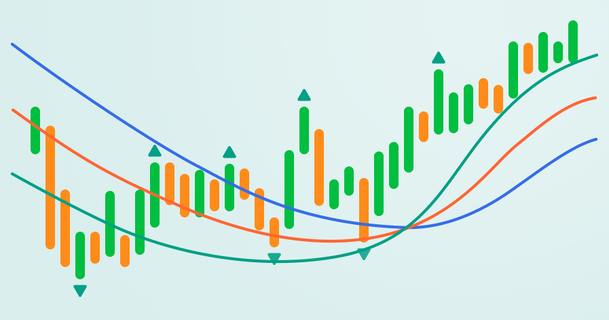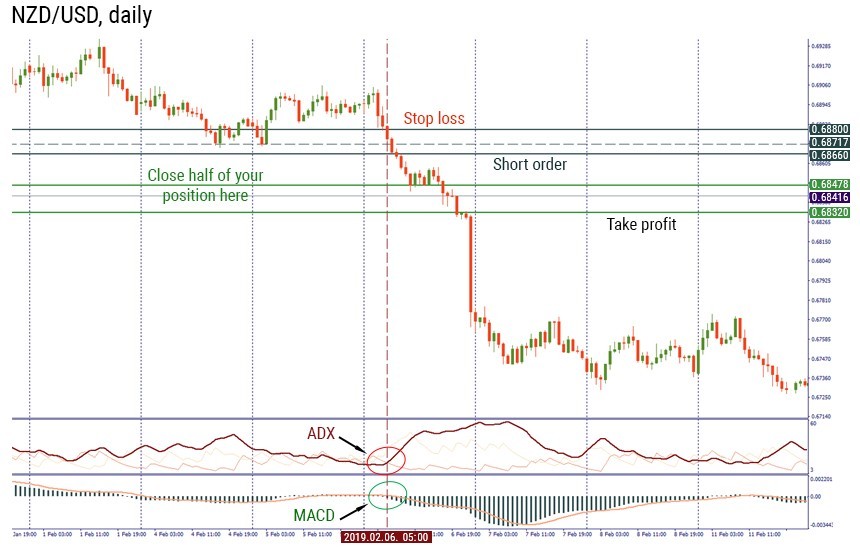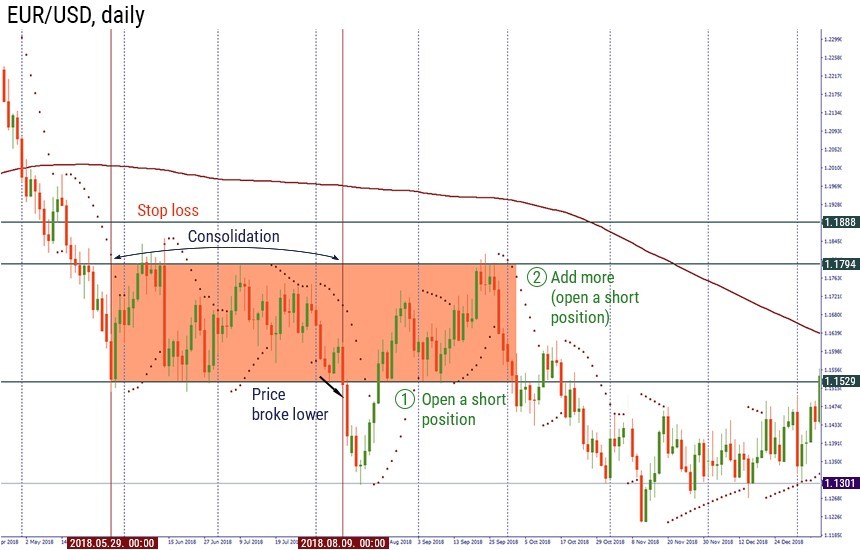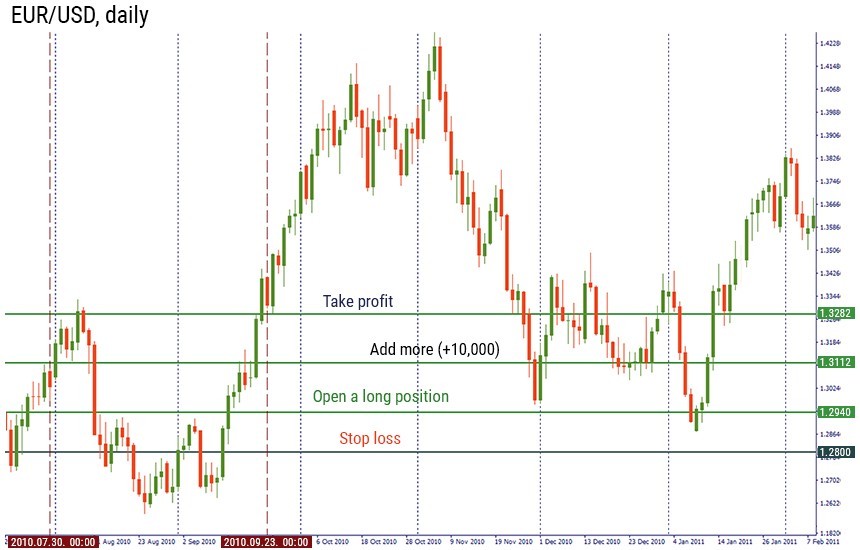
Bill Williams is the creator of some of the most popular market indicators: Awesome Oscillator, Fractals, Alligator, and Gator.

Don’t waste your time – keep track of how NFP affects the US dollar!
Data Collection Notice
We maintain a record of your data to run this website. By clicking the button, you agree to our Privacy Policy.

Beginner Forex Book
Your ultimate guide through the world of trading.
Check Your Inbox!
In our email, you will find the Forex 101 book. Just tap the button to get it!
Risk warning: ᏟᖴᎠs are complex instruments and come with a high risk of losing money rapidly due to leverage.
71.43% of retail investor accounts lose money when trading ᏟᖴᎠs with this provider.
You should consider whether you understand how ᏟᖴᎠs work and whether you can afford to take the high risk of losing your money.
2020-03-25 • Updated
Information is not investment advice
Imagine, you opened your position, placed stop loss and take profit. What would be your next steps? Well, you may just sit and wait for further market moves. On the other hand, professional traders try to be more flexible while making their trading decisions by scaling in and out opened positions. If you want to trade more like a pro, then this article is for you! Let’s find out what is scaling and how you need to apply it correctly to manage your risks.
What is Scaling?
The term "scaling" has nothing to do with weighting. Remember, we live not in a barter era!
Basically, it means adding or removing units from the position that you opened. If you scale, you take control of your risk and maximize your profits. As with any advanced strategy, scaling has its pros and cons.
Advantages and disadvantages of scaling
How may scaling be helpful for a trader?
At the same time, scaling has some negative sides.
Now we will explain to you how to scale in and out your positions correctly so you don't risk too much and lose your profit.
How to scale out
Scaling out refers to closing parts of your positions. It basically helps you to reduce your risks. If you use it with trailing stops, you may create a “nearly” risk-free trade.
Let's find out how to apply it effectively from the example below.
Imagine that you trade NZD/USD. You have $10,000 on your account. You noticed that ADX started to move up with +DI going under –DI. This situation signaled increasing bearish pressure. At the same time, MACD fell closer to its zero line, which showed a possible reversal. You’ve decided to enter the market on the breakout of the strong support at 0.6872. The size of the position you opened equaled 1.
When the bearish candlestick was formed and caused a breakout you opened a short position at 0.6866. You place your stop loss at 0.6880 and take profit at 0.6832. With the chosen size of your position (pip value of this position is $1) and a stop loss of 14 pips, your total risk is $14 or 0.14% of your account.
The market moved in your direction and you earned some pips. Later that day traders anticipated the release of jobs data for New Zealand. Positive forecasts made you worry about your position. As a result, you decided to close half of your position by buying 5,000 units of NZD/USD at the current exchange rate of 0.6848. As you earned 18 pips, your profit will be $9. This leaves you with an open position of 5,000 units with the take profit at 0.6832.
If the pair reverses and triggers your stop loss at 0.6880, then you will still have a profit of $9.

The decision to take a part of your profit is up to you, but you need to weigh the pros and cons.
You need to decide whether you want to get at least some of the profit or worry about the potential losses.
Now let’s study how to increase your max profit by scaling into positions.
How to scale in
There are two different scenarios when you may decide to scale in.
The first one describes the situation when the trade is going against you. This is a dangerous situation and you must be sure that your risk is kept within your comfort zone. Here are the rules:
Let’s consider the example below.

On the daily chart of EUR/USD, the pair was moving within the downtrend. The pair started to consolidate between the 1.1529 and 1.1794 levels before breaking lower. After reaching the area around the 1.1529 level the pair moved up to the area of the previous consolidation. If you are sure that the price is going to resume the downtrend, you may either enter a short position at 1.1529 or at the resistance at 1.1794. If you are cautious, you may wait until the pair tests the upper border of the consolidation range at 1.1794 and then moves down below the 1.1529 level. After that, it may be comfortable to open a short position.
In case you want to maximize your profit, you may enter at both 1.1529 and 1.1794. Let’s suppose that you have $5,000 on your account and you want to risk 3%. That means you are comfortable risking $150 ($5,000 balance multiply by 0.03 risk) of your trade.
Let’s suppose that you place your stop loss at 1.1888 (above the area of the consolidation).
Your first step will be to open a short position at 1.1529 with 2,500 units. 2,500 units of EUR/USD means your pip value equals $0.25. With the stop loss at 1.1888, you will risk 359 pips, and if it’s reached you’ll get the $90 loss ($0.25*359 pips).
Then, if the price doesn’t rebound from the 1.1529 level, you’ll decide to add more at 1.1794. You open a short position with 5,000 units at the 1.1794 level. With the 5,000 units of EUR/USD, the value of every pip becomes higher and reaches $0.5.
With the stop at 1.1888, you will risk 94 pips or $47 ($0.5* 94).
In general, this is a $137 loss, if your stop is triggered.
This is not a very easy approach, and you must be sure that all of the risks are pre-determined.
Now, let’s find out the rules of scaling in when the market is moving in your direction. In this case, you can scale into it to increase your profit. You need to follow the steps below to do that correctly:
Let’s consider the example below to understand the logic of scaling in.

Imagine, that you trade EUR/USD. You decide to buy after the break of the resistance. You open your position at 1.2940 and place a stop loss at 1.28. The size of your position is 1 and you trade with the $10,000 amount on your account. You decide to place your take profit at the next significant resistance 1.3282. You risk 140 pips ($140) with the reward of 342 pips ($342). As a result, your risk-reward ratio will equal 1:3.
Now, let's suppose that you're very confident with your trade set up and decide that you will add more if the market moves in your favor.
You decide to add more after the pair managed to overcome the 1.3112 level, where the pair fell down on July 30 and trail your stop.
Now, if you open your position at 1.2940, the additional $10,000 at 1.3112 will increase the possibility of earning not 342, but 512 pips! How?
When you scale in into your position at 1.3112, you need to recalculate the size of your reward at the take profit level. So, we count the number of pips from the scale point to your take profit at 1.3282. The size of the expected profit here equals $170. If you sum up the reward after your entry ($342) with the new one ($170), you’ll get +$512 profit. But do not forget to trail your stop loss!
Be aware, that scaling in may not be suitable for every market situation. It's worth mentioning that this tool is better to use in trending markets or during the strong intraday moves. Scaling in during the range-bound market may trigger your stop loss very quickly.
Conclusion
Scaling in or out may make your trading more flexible. It increases the size of your reward, but at the same time raises the amount of your risk. You need to be very careful while dealing with scaling and use it only after the proper calculations and the analysis.

Bill Williams is the creator of some of the most popular market indicators: Awesome Oscillator, Fractals, Alligator, and Gator.

Trend strategies are good - they may give significantly good results in any time frame and with any assets. The main idea of the ADX Trend-Based strategy is to try to catch the beginning of the trend.

Counter-trend strategies are always the most dangerous but also the most profitable. We are pleased to present an excellent counter-trend strategy for working in any market and with any assets.
Your request is accepted.
We will call you at the time interval that you chose
Next callback request for this phone number will be available in 00:30:00
If you have an urgent issue please contact us via
Live chat
Internal error. Please try again later